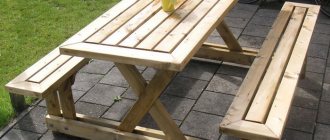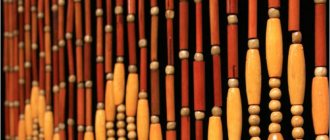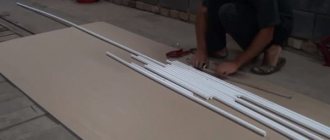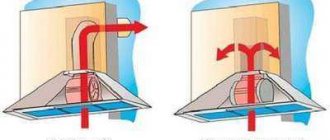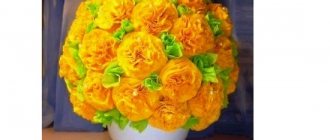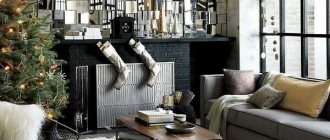Table textiles
Luxurious tabletop - table decoration. So should you cover it with a tablecloth? Yes, after all, a beautiful table top is worse than an ordinary one, and dishes can damage the furniture. A tablecloth will protect an expensive tabletop, while the table will not lose its attractiveness, since a well-chosen tablecloth is an interior decor item that allows you to emphasize style, bring a festive mood to the room, and create a color accent. And even more so, it is considered good form to lay out a tablecloth before setting the festive table.
However, in our time there are alternatives to tablecloths that are completely acceptable by the rules of etiquette. However, let's talk about everything in order: let's talk about how to choose a tablecloth for the kitchen table and for the formal dining room, what the size of the tablecloth should be, how to choose a tablecloth for a round table and how to decorate the table using table textiles .
Tablecloth shape
The main shapes of a tablecloth are: square, oblong (rectangular), oval and round. It is necessary to select a tablecloth that suits the shape of your table:
- square table - square tablecloth
- rectangular table - rectangular tablecloth
- round table - round tablecloth, but square is also acceptable
- oval table - oval tablecloth, but it is possible to use a rectangular tablecloth if there is no oval one.
If possible, it is better to give preference to a tablecloth that has the shape of a table. The exception is a square tablecloth and a round tabletop. For small round tables, a square tablecloth is often deliberately chosen, since when laid on the table, it drapes in an original way and “flows” interestingly down from the tabletop.
However, more often a square tablecloth for a round table is used in combination with a contrasting round tablecloth (a smaller square one on top of a larger round one). All this is done mainly for decorative purposes.
Tablecloth for an oval table
The process of sewing a tablecloth for an oval table with your own hands is very similar to making a tablecloth for a round tabletop, but there are also differences. In general it looks like this:
- The paper pattern is prepared according to the full size of the tabletop; along the edges you need to add an overhang of 30 - 40 cm.
- The tablecloth is cut using a pattern folded in four from fabric folded in four. When cutting out the workpiece, do not forget about seam allowances.
- The cut pieces are processed with an overlocker and hemmed.
To ensure that the tablecloth on a round or oval table hangs as much as possible and drapes well, you can sew a weight cord into the hem.
A tablecloth for a rectangular table is made in the same way. A festive tablecloth can additionally be decorated with lambrequins, bows, ruffles, tassels, fringe - depending on the type of fabric.
Nowadays, even for the kitchen table, choosing a suitable tablecloth is quite problematic. While you can sew this design element with your own hands, which will fit perfectly into the interior of a new kitchen or dining room.
If the hostess of the New Year's party has taken the matter seriously, then she will take care of everything related to the holiday. And last but not least, she will think about the New Year's tablecloth. You just need to set aside time for needlework and have the desire, and you can sew such a festive tablecloth with your own hands. How to choose material for a tablecloth was described in detail in the article “How to choose fabric for sewing a tablecloth for the New Year’s table.” Now let’s delve into how tablecloths are sewn on rectangular and square tables.
Rectangular table.
Your main holiday table needs to be measured first. We take measurements for the tablecloth: tabletop length and width. A festive tablecloth must have an overhang or borders so that it not only slightly covers the tabletop, but also hangs down the sides. The borders are supposed to be of such length that they cover half of the table legs. Some tablecloths are made to extend to the floor, but then you need to sew on a special overhang.
To calculate and cut the material, we add the estimated length of the borders to our tabletop measurements. But it’s even better to use another material for the border with Christmas symbols or New Year’s motifs. Applique designs, such as a Christmas wreath, spruce branches or Christmas tree decorations, will also look great on borders. If you use light-colored material, you can do embroidery, but to make it happen faster, embroider as little as possible. To do this, place along the border simple snowflakes made of six stitches of different lengths using lurex thread or five-pointed stars made of five stitches, for which you need to choose threads with permanent coloring so that you do not get color spots after washing.
An example of cutting is shown in Figure 1.
We start cutting from the tabletop itself. To the contours of the part we add 2 cm to the seams, taking into account the slight shrinkage of the natural material. Next we cut out the stripes for the border. To get the required length, add the depth of the curb overhang multiplied by two to the dimensions of each side of the rectangle. A double layer of fabric on the border will weigh down the edges of the tablecloth and help it stretch on the tabletop. We also leave seam allowances. In Figure 1, the fold in the middle of the border is indicated by a dashed line.
Before sewing on the tablecloth border, each of the four borders is folded in half and ironed to maintain this shape. Then, straighten the fold, attach the border fabric to the tabletop fabric “face to face” and stitch, not reaching the corners by 4-5 cm, fold the ironed fold and repeat the action on the wrong side.
The corners on the borders of the tablecloth can be stitched in two ways: overlapping and with diagonal stitching. Both methods are presented in Figure 2. When stitching with an overlap, one of the borders is inserted inside the other, which covers it. When stitching diagonally at the corners, the corner ends of the border are folded right side out, the stitched ends are folded diagonally, you get a triangle, it is better to iron them so that the subsequent diagonal seam is even. This is done on both the front and back sides of the tablecloth. Now you can complete the remaining 4-5 cm from the edges of the border, closing the connection of the borders from the front and back. The tablecloth is ready.
These are not all the suggestions for making New Year's tablecloths yourself. Read the continuation: “How to sew a tablecloth for a square or rectangular New Year’s table. Part 2”, and “How to sew a tablecloth for a round New Year’s table” Part 1 and Part 2.
Sewing a tablecloth with your own hands, what is it for? The stores have such a huge selection of tablecloths, it seems, for every taste. But start choosing, and it turns out that although the choice is large, choosing the right one is not so easy. Either the tablecloth looks too cheap, or the pattern does not match the interior of the room, or the fabric is so artificial that it even gives off some kind of unpleasant chemical smell. And if the interior of the room is decorated in a certain style, for example, “Provence,” then you want the tablecloth to match this style.
In addition, to sew a tablecloth with your own hands means to create a unique thing, an exclusive, which will be in one copy, and which you will definitely not find in any housewife. And the very process of creating such a unique thing with your own hands, even if you are not a skilled needlewoman, will captivate and fascinate you.
As you work, you will admire every successful detail of the tablecloth. You will be delighted by the clarity of the lines made, touched by the airiness of the touching ruffles, and the bright festiveness of the satin border. And the whole process of sewing a tablecloth with your own hands, like any creativity, will not be boring and uninteresting, you will feel like a master, and you will create.
Types of tablecloths
So, from dreams, let's get down to business. First you need to decide what kind of tablecloth you want to sew. Festive, everyday for the dinner table or camping. Depending on their use and purpose, tablecloths differ not only in material, but also in finishing.
- Festive tablecloths for formal dinners are usually white, made of thick silk or linen. They can be decorated with ruffles, flounces, fringe, lace, embroidery, and monograms.
- Everyday tablecloths for the dining table are made of a plain fabric, preferably not white. Colored or checkered tablecloths also look good on the dining table. Since the tablecloth is used constantly, the material for it can be purchased inexpensively, but easily washable, for example, cotton tapestry. The dining tablecloth can also be decorated with ruffles, appliqués, satin borders, and thin lace trim.
- A camping tablecloth is intended for outdoor recreation, when a “table” is organized directly on the grass, spreading a tablecloth on it. Such tablecloths should be made of dense, durable and easily washable fabric, without any special decorating elements.
Materials and tools needed for work
In order to sew a tablecloth with your own hands, you will need the following materials and tools:
- Fabric for tablecloth
- Finishing material (satin ribbon and narrow lace trim)
- Sewing machine
- Threads, needles, scissors, chalk, centimeter
What size should the tablecloth be?
To determine the size of the tablecloth that suits you, you need to measure the tabletop. For a square table, one length is measured, for a rectangular table - length and width, for an oval table - length and width (large diameter and small diameter), for a round table - diameter.
Next, you need to add the length of the “drop” or “overhang” , because the tablecloth should hang from the tabletop. The amount of fabric that hangs down is called a “drop.” The classic length of the “drop” is 20 cm on each side.
That is, it is necessary to add at least 40 cm to the length and width so that the tablecloth “drips” evenly from all sides of the table. This is how the size of the tablecloth is determined for square, rectangular and oval tables.
a – length of the tabletop (large diameter of the oval tabletop) b – width of the tabletop (small diameter of the oval tabletop) c – length of the “drop” or “overhang” Tablecloth size = a+c and b+c
Thus, if the tabletop size is 150 by 150, you need to take a tablecloth approximately 190 by 190. However, tablecloths sold in stores have standard sizes, so you need to select a tablecloth of the size that is closest to what you need.
For a round table we calculate this: d – table diameter c – overhang length Tablecloth size = d + c ∙ 2
That is, if the diameter of a round table is 110 cm, and the overhang is 20 cm along the entire edge, then you need to add 40 to 110. This means that we will look for a round tablecloth with a diameter of approximately 140-150 cm.
One of the rules of table etiquette says: it is better for the tablecloth to be too long than a little short. That is, if the size you need is somewhere in the middle between two standard sizes, it is better to choose the larger one.
Designers recommend making more overhang if there are intricate patterns and original cutouts along the edges of the tablecloth.
However, it is undesirable for the overhang to be too large, as this will create inconvenience for those sitting at the table: the tablecloth will cling to their feet, and this risks moving the textiles and even pulling them off the table along with the dishes. The maximum length of the overhang is 40 cm.
How to sew curtains for the kitchen with your own hands: calculating the amount of fabric
It’s worth starting the experiment by making a simple model
curtains
One of the options is the classic model , consisting of two rectangular panels of certain dimensions. To determine the size of the purchased cut, you need to make some measurements:
- Determine the distance from the curtain rod to the desired length of the curtains. More often, as a rule, short curtains for the kitchen, reaching the windowsill, are practiced. However, if the style of the room and its area allows, you can easily choose the option of curtains that reach the floor. Having decided on the length, add 6 cm from the bottom to perform a double hem and 3-6 cm (depending on the density of the selected fabric) from the top, which are intended for hemming and attaching curtain tape to it.
- To determine the width of the fabric, measure the length of the curtain rod and multiply it by the curtain tape gather factor, which ranges from 1.5 to 2.5. To the resulting value, do not forget to add 3 cm for hemming the material on the sides.
- In accordance with the measurements obtained, we purchase the required amount of fabric.
It is worth noting that the above calculation mechanism is valid for sewing a classic curtain model . If you are planning to sew fantasy-shaped curtains, find an algorithm for creating a pattern and calculating the required amount of fabric for it on the Internet.
Tablecloth color
The color of the tablecloth in the kitchen-dining room or living-dining room should fit into the overall color scheme of the room. So, for example, if the wallpaper in the room is white and green, the curtains are light green, and the upholstered furniture is beige, then the tablecloth can be green, white, beige, or green-beige.
In a light or dark monochrome interior, a tablecloth can be a bright spot, a splash of color. You can support the color of the tablecloth with 1-2 details in the interior.
However, there are also neutral options - these include tablecloths in cream, light beige, light pearl, golden and other similar shades. Neutral tablecloths are suitable for setting tables in any interior, regardless of style and color.
As for the tablecloth for the festive table , the choice here is limitless, because such a tablecloth does not have to match other interior elements in color, since it is laid for one day.
For the most special occasions, it is recommended to give preference to a white tablecloth.
For the New Year's table, you can choose a tablecloth in shades of green (the color of the Christmas tree), red (the color of the most common Christmas tree decoration), and silver (the color of sparkling snow). In addition, the New Year's tablecloth can also have a themed print - a herringbone pattern, with images of snowmen, etc.
Sewing a tablecloth
Every housewife who knows the basics of sewing can easily make her own tablecloth for a festive feast. Having cut out the fabric according to the size of the table, all that remains is to process the bottom of the product. This can be done by hemming the edge on a sewing machine.
There are several ways to easily make an even hem:
- Overcast the edge using an overlocker. On the wrong side, mark 2 cm along the perimeter. Then bring the edge to the line, iron it and sew it into the overcast seam using a sewing machine.
- Place marks on the front side at a distance of 1 cm from the edge. Turn inside out along the line and baste with hand stitches. Then iron and stitch.
Advice! If you sew a thin cord into the hem, it will make the bottom heavier and improve the drapery.
Table textiles - not just a tablecloth
Cloth napkins. For formal gatherings, cloth napkins are a must. Fabric napkins are often sold complete with a tablecloth. This is convenient: the designers of such sets have already thought out the combination of colors of the tablecloth and napkins, so you don’t have to look for successful combinations.
The napkins can be made from the same fabric and the same color as the tablecloth, but it is preferable for the napkins to be at least a little different. They can even be contrasting. In a good way, a napkin lying on the table should not merge with the tabletop so that it does not fall out of sight.
Runner or track. This is the name given to a strip of fabric that runs the entire length of the table (often with an overhang), but is quite narrow. This path is similar to our traditional towel.
The path is used in different ways, there are no strict rules. More often it is placed in the center of the table on the tablecloth - in this case, the runner should be different in color from the main tablecloth. Dishes with common dishes, as well as vases with flowers and fruits are placed on the path.
In this case, the paths serve the function of decorating the table and protecting the tablecloth. However, the table runner can be laid directly on the tabletop without a tablecloth. In general, this is not prohibited by etiquette. However, it is advisable to prepare and place “plate plates” or place mats on the table - these are napkins that are placed on the table in front of each person sitting. Dishes are placed on these individual napkins, cutlery is laid out, etc. Thus, the tabletop remains protected: shared dishes are placed on the table runner, and individual dishes are placed on the underplates.
Another option is several paths placed across the table - one path for two participants in the feast sitting opposite each other.
Naperon. This is a small additional tablecloth, usually rectangular in shape, which spreads over the main tablecloth. The cover is used to protect the main tablecloth and, of course, to cover the table more aesthetically.
Experiment with table textiles, because a beautiful table means comfort in the home and satisfied faces of guests. Happy feasts to you!
Fabrics for sewing tablecloths
The choice of material directly depends on the style of the future product.
There are 3 types of tablecloths.
- Everyday: they are practical and have a slight overhang, designed to successfully highlight the interior of the kitchen space.
- Festive: elegant or themed products that have a long overhang and have a special color suitable for the festive mood.
- Tea or guest rooms: a piece of furniture that is very useful for a small feast with friends and family.
Natural
Until recently, natural materials were among the most revered by every housewife. These include linen, cotton, silk. They look great as a festive accessory for a feast, but they have one big drawback. They are very difficult to wash, especially if the stains on the fabric are old.
Silk fabrics are ideal for celebrations such as weddings or birthdays. They are very light and look impressive during a house party. Colors remain rich and vibrant for a long time. The disadvantage of this canvas is its rather high cost.
Synthetic
Polyester and Teflon fabric are no less popular today than natural materials. They showed themselves perfectly in tailoring for everyday wear.
Practicality and versatility, a variety of patterns and long service life make this fabric the most popular for kitchen decoration.
However, polyester has a low combustion class and is highly flammable, which is quite dangerous in a kitchen where there is an open fire.
Mixed
Modern enterprises also offer ultra-new mixed types of fabrics. They combine the beauty and strength of natural material, as well as the practicality and durability of synthetic fabric.
These include crane and mother.
This fabric option is most suitable for everyday wear. It is easy to clean and wash after a feast, durable and beautiful. Some housewives prefer this option for festive feasts.
What you need to sew a tablecloth on a rectangular table
The first thing you need to do before starting to sew any product is to choose the appropriate material. Due to the fact that tablecloths, napkins and kitchen towels are in a constant risk zone (stains from food, drinks, dirty hands), increased demands are placed on the fabrics from which they are sewn, such as:
- density;
- crease resistance;
- ease of care;
- color fastness;
- environmental friendliness.
If the fabric combines all of the above qualities, dishes do not slip on it and also drapes well, it can be considered an ideal material for sewing. Most often preference is given to:
- cotton that absorbs moisture well;
- natural linen;
- “crane” produced in Belarus;
- blends of cotton and polyester;
- teflon materials.
How to make and decorate napkins with your own hands
Felt napkins
It's easy to make your own napkin. Made from thick fabric, such as felt. The size and configuration of the napkin are arbitrary. Along the long sides of the napkin or in the middle, you can attach flowers and buds with Moment glue or attach with two or three stitches. Sew the fabric of the main part of the napkin with a buttonhole stitch using threads of a contrasting color. Sew the core of the flower in the form of a small circle to the flower using a knot, then connect all the motifs together and attach to the napkin with invisible stitches from the inside out.
Napkins for service
Small bright napkins that are placed under each tea or coffee set will help to enliven the color scheme of the interior. These napkins are designed for serving the tea table. They are used as coasters for cups on a polished table surface. Napkins are decorated with embroidery made in satin stitch, cross stitch, stem and chain stitches, buttonhole stitch, and crocheted or edge stitched with threads to match the pattern or fabric. A table setting looks very elegant if the set includes napkins made of bright fabrics of various colors in the patchwork style or crocheted.
Napkins for the festive table
On a holiday, the hostess lays her best tablecloth on the table, places elegant dinnerware and cutlery, and places napkins next to them. You can, of course, just put a napkin folded in four on the table, but you can get creative and fold it differently. How to beautifully fold napkins for a holiday table was described in detail here.
Beautifully laid out napkins will give the festive table a finished look. It is best if the color of the napkins is in harmony with the color of the tablecloth. Or you can choose napkins that are contrasting in color. Any variations are possible at your discretion. The only requirement is that in order to fold the napkins the way we suggest, they must be square.
To ensure that napkins fold well and keep their shape, they need to be heavily starched after washing.
Pros and cons of canvas
Like any material, matting has its advantages and disadvantages. Most often, negative reviews are caused by the wrong choice of cloth type. Due to the fact that the matting is made from different threads, its use also differs.
A matting made of cotton, linen, wool fibers with a small addition of acrylic or nylon is recommended for creating outerwear - coats, cardigans. This fabric will not wrinkle and fits well. For suits, wool or linen is used. The cotton version of the material is used to create bed linen, curtains and towels. Decorative elements for the room and various accessories are made from flax fibers without the addition of synthetics and additional dyeing “to look like burlap.”
The main positive qualities of matting:
- High strength and wear resistance of the material. Resistant to tearing and abrasion;
- Elasticity and shape retention. The matting does not wrinkle or sag under the influence of temperatures or pressure, independently returning to its original appearance after eliminating external influences;
- Environmentally friendly, natural fabric does not cause allergies, even in cases where synthetic fibers are added when creating the fabric. Absolutely safe for disposal;
- Stylish appearance, various color solutions of the material;
- The matting is resistant to foreign odors, dirt and moisture.
The affordable cost and easy care of the fabric have made it popular for many years for a variety of uses - from upholstery to sewing practical and comfortable clothing.
This type of fabric also has its disadvantages. The cloth frays quite heavily around the edges, which makes cutting and sewing items difficult. Snags are easily smoothed out, but due to the large weave, they can be a common problem. Many textile manufacturers solve this issue by creating an additional adhesive lining for the material. This allows you to avoid delamination and spattering when cutting furniture upholstery or outerwear. For less dense products, such as suits or towels, it is better to use a matting without additional lining.
We sew a tablecloth with our own hands: instructions for creating
- We decide on the purpose of the tablecloth.
- We select the material.
- We calculate the fabric consumption.
- We cut out the material.
- Processing corners (for rectangular and square)
- We do the edging.
- We choose additional accessories and decoration.
A tablecloth woven in a factory and a tablecloth made by yourself is a huge difference, because the products you make yourself reflect your individuality and tastes.
Using our tips, you can sew a tablecloth of any shape with your own hands: round, square, oval and rectangular. Even for beginners, this will not be difficult and will bring joy when the idea comes to life.



